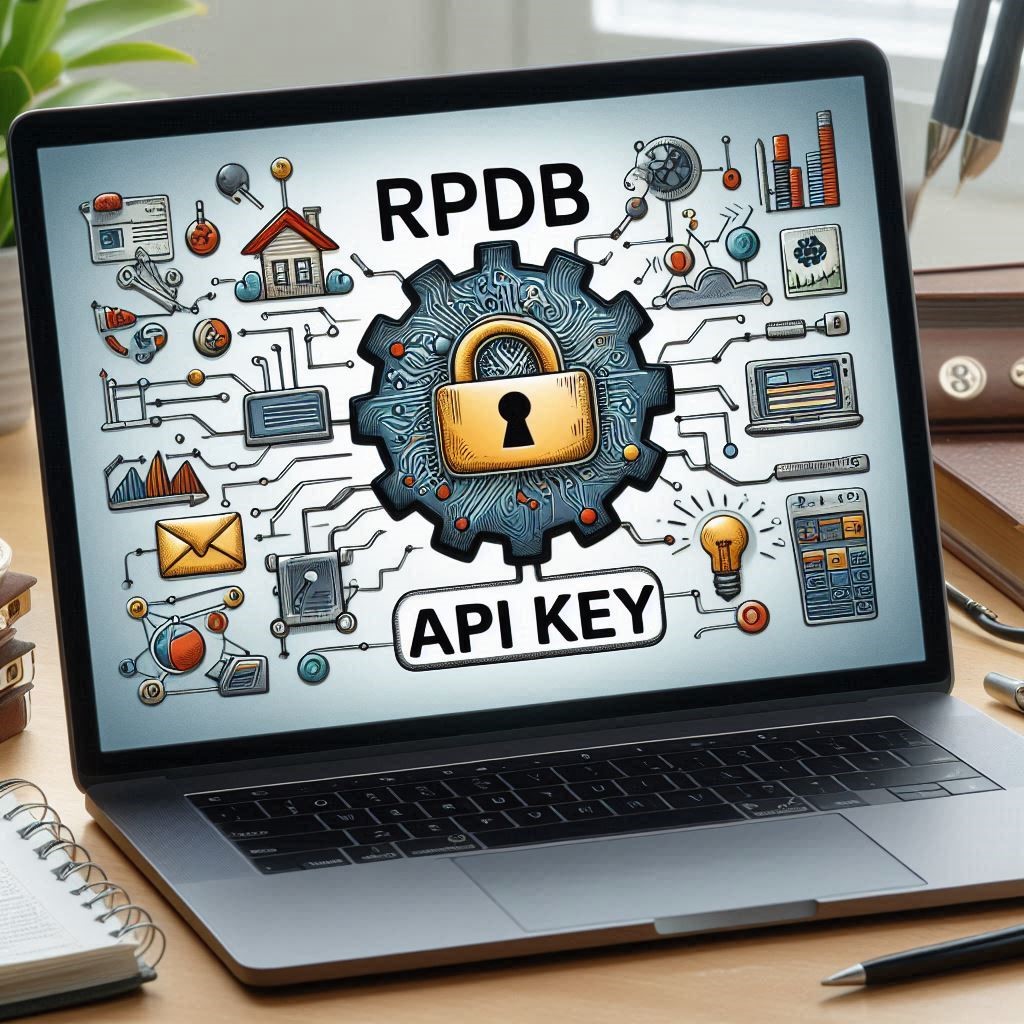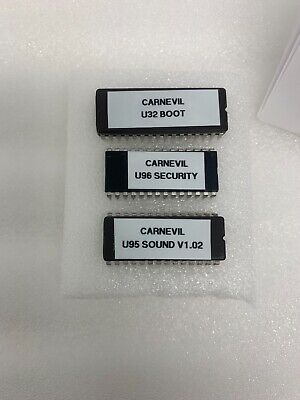Preface
Overview of RPDB and the Importance of API Keys
Rating Poster Database (RPDB) is a one-of-a-kind platform that provides posters for movies and TV shows with ratings already inserted. Many media center apps are compatible with this platform. Some of them are Stremio, Kodi, Emby, and Jellyfin. Automated retrieval of updated poster pictures and ratings is made possible with an RPDB API key, which is essential for accessing and integrating these capabilities into your apps.
An API key functions as a unique identifier, allowing developers to authenticate their applications and securely access RPDB’s services. By managing and securing these keys, users ensure their applications can efficiently and safely interact with RPDB’s vast database.
What This Article Will Cover
This comprehensive guide will delve into the following key areas:
- Understanding RPDB API Keys: Here, we’ll go into the nature of API keys, their importance, and how they function inside the RPDB ecosystem.
- Getting Started with RPDB API: Easy-to-follow directions for creating an environment for development, getting an API key, and requesting an API for the first time.
- Exploring API Features and Endpoints: An exhaustive catalog of all API endpoints, supported request types, and sample calls is provided.
- Subscription Tiers and Their Benefits: Details on the various subscription plans, what they offer, what they don’t, and how to choose the right one for you.
- Advanced Usage and Optimization: Guidelines for getting the most out of APIs, controlling their throughput, and making the most of their more complex capabilities.
- Security Best Practices: Techniques for rotating, managing, and safely storing your API keys to guard your apps.
- Common Issues and Troubleshooting: Solutions for typical issues include rate restrictions, invalid API keys, and other possible mistakes.
- Community and Support: Resources for more education including support choices, forums, and documents.
By the end of this post, you will have a complete awareness of how to properly utilize and manage your RPDB API key, so guaranteeing smooth integration and best performance of RPDB’s services inside your systems.

Understanding the RPDB API Key
Definition and Purpose
An RPDB API key is a unique identifier that grants access to the Rating Poster Database (RPDB). This key enables applications to authenticate and interact with RPDB’s services. By using an API key, developers can securely request movie and TV series posters with embedded ratings. These posters enhance user experiences in media center applications like Plex, Emby, Jellyfin, Kodi, and Stremio.
API keys ensure secure communication between your application and the RPDB. They monitor usage and assist control access, therefore stopping illegal access. Customizing the obtained data made possible by API keys guarantees that you obtain the most pertinent material for your need.
How to Obtain an API Key
Step 1: Create an Account
To get started, visit the RPDB website and create an account. Click on the “Sign Up” button and enter your email address and a secure password. Verify your email to activate your account.
Step 2: Subscribe to a Tier
RPDB requires a subscription to access its API services. Navigate to the subscription page and choose a tier that suits your needs. RPDB offers various tiers, each with different features and limits. Subscribe by selecting a plan and completing the payment process.
Step 3: Access the API Key Management Section
Once subscribed, log into your account and go to the API key management section. This section is usually found under account settings or the developer portal. Here, you can generate and manage your API keys.
Step 4: Generate a New API Key
Click on “Generate New API Key.” You may be prompted to provide a name or description for the key. This helps you identify it later. After providing the necessary information, click “Generate.” The new API key will appear on your screen.
Step 5: Secure Your API Key
Treat your RPDB API key as sensitive information. Do not share it publicly or include it in publicly accessible code repositories. Store it in a secure location, such as a password manager or environment variable in your application. This practice enhances security and ensures your API key remains confidential.
Understanding the RPDB API key is crucial for leveraging RPDB’s services. By following these steps, you can easily obtain and secure your API key, enabling your application to access a wealth of movie and TV series posters with ratings. Proper management of your API key ensures seamless integration and optimal performance, enhancing the user experience in your media center applications.
Getting Started with RPDB API
Setting Up Your Development Environment
Setting up your development environment will help you to begin using the RPDB API. Use these guidelines to guarantee an easy integration procedure.
Step 1: Install Required Software
First, ensure you have Python installed on your system. You can download Python from the official website. After installation, verify it by running python --version in your terminal.
Next, install the necessary libraries. Use pip to install the requests library, which allows you to make HTTP requests easily.
pip install requestsStep 2: Obtain Your RPDB API Key
As outlined earlier, you need an RPDB API key to access the services. Make sure you have followed the steps to obtain and securely store your API key.
Step 3: Set Up Environment Variables
For security, store your API key in an environment variable. This prevents it from being hardcoded in your script, reducing the risk of exposure.
Create a .env file in your project directory and add your API key:
RPDB_API_KEY=your_rpdb_api_keyUse the python-dotenv library to load these variables in your Python script. Install it using pip:
pip install python-dotenvExample: Integrating the RPDB API with a Python Application
Now, let’s integrate the RPDB API with a Python application. This example demonstrates how to retrieve movie posters using your API key.
Step 1: Import Required Libraries
In your Python script, import the necessary libraries:
import os
import requests
from dotenv import load_dotenv
# Load environment variables from .env file
load_dotenv()
# Retrieve API key from environment variables
api_key = os.getenv('RPDB_API_KEY')Step 2: Define the API Request
Set up the API request to retrieve a movie poster. Use the requests library to make the HTTP GET request:
# Define the API endpoint and parameters
url = 'https://api.ratingposterdb.com/{api-key}/imdb/poster-default/tt0111161.jpg'.format(api_key=api_key)
# Make the request
response = requests.get(url)
# Check if the request was successful
if response.status_code == 200:
with open('poster.jpg', 'wb') as file:
file.write(response.content)
print('Poster downloaded successfully.')
else:
print(f'Error: {response.status_code}')This script fetches the poster for the movie “The Shawshank Redemption” (IMDB ID tt0111161) and saves it as poster.jpg.
Step 3: Run the Script
Execute your Python script:
python your_script.pyIf successful, the script will download the poster and save it in your project directory.
By setting up your development environment and following these integration steps, you can efficiently use your RPDB API key to access and display movie posters. This improves your media applications since it gives your consumers current visual materials. Effective control and security of your API key guarantees a flawless and safe integration.
Exploring API Features and Endpoints
Detailed Breakdown of Available Endpoints
The RPDB API offers various endpoints to access its services. These endpoints allow you to fetch posters, check API key validity, and more. Here’s a detailed breakdown of some key endpoints:
1. Poster Retrieval Endpoint
- URL:
https://api.ratingposterdb.com/{api-key}/{id-type}/poster-default/{media-id}.jpg - Description: Retrieves the default poster for a given media ID (IMDB, TMDB, or TVDB).
- Parameters:
api-key: Your RPDB API key.id-type: Type of media ID (imdb, tmdb, tvdb).media-id: The ID of the media (e.g., IMDB ID).
2. Key Validity Check Endpoint
- URL:
https://api.ratingposterdb.com/{api-key}/isValid - Description: Verifies if an API key is valid.
- Parameters:
api-key: Your RPDB API key.
3. Custom Poster Retrieval Endpoint
- URL:
https://api.ratingposterdb.com/{api-key}/{id-type}/poster-custom/{media-id}.jpg - Description: Retrieves a customized poster with specified settings.
- Parameters:
api-key: Your RPDB API key.id-type: Type of media ID (imdb, tmdb, tvdb).media-id: The ID of the media (e.g., IMDB ID).
Example API Calls for Each Endpoint
Let’s look at example API calls using Python and the requests library.
1. Retrieve Default Poster
import os
import requests
from dotenv import load_dotenv
# Load environment variables
load_dotenv()
# Retrieve API key from environment variables
api_key = os.getenv('RPDB_API_KEY')
# Define the API endpoint
url = f'https://api.ratingposterdb.com/{api_key}/imdb/poster-default/tt0111161.jpg'
# Make the request
response = requests.get(url)
# Check if the request was successful
if response.status_code == 200:
with open('default_poster.jpg', 'wb') as file:
file.write(response.content)
print('Default poster downloaded successfully.')
else:
print(f'Error: {response.status_code}')2. Check API Key Validity
# Define the API endpoint
url = f'https://api.ratingposterdb.com/{api_key}/isValid'
# Make the request
response = requests.get(url)
# Check if the request was successful
if response.status_code == 200:
print('API key is valid.')
else:
print(f'Error: {response.status_code}')3. Retrieve Custom Poster
# Define the API endpoint
url = f'https://api.ratingposterdb.com/{api_key}/imdb/poster-custom/tt0111161.jpg'
# Make the request
response = requests.get(url)
# Check if the request was successful
if response.status_code == 200:
with open('custom_poster.jpg', 'wb') as file:
file.write(response.content)
print('Custom poster downloaded successfully.')
else:
print(f'Error: {response.status_code}')Explanation of Response Formats
The RPDB API primarily returns images for poster endpoints and JSON for validity checks.
Image Responses
When you request a poster, the response is an image file (e.g., JPG). You can save this image directly to your filesystem, as shown in the examples above.
JSON Responses
For endpoints like API key validity checks, the response is a JSON object. A successful response might look like this:
{
"valid": true,
"message": "API key is valid."
}In case of errors, the response might contain an error message and status code:
{
"valid": false,
"message": "Invalid API key.",
"status_code": 403
}Exploring the RPDB API features and endpoints allows developers to integrate rich media content into their applications. By understanding and utilizing these endpoints, you can retrieve various types of posters and ensure secure, efficient access to RPDB’s services. Properly handling API responses ensures smooth and error-free application performance.
Subscription Tiers and Their Benefits
Overview of Different Subscription Plans
The RPDB API offers multiple subscription plans to cater to various user needs. Each plan provides access to RPDB’s vast database of movie and TV series posters with embedded ratings. Understanding the benefits and limits of each plan helps you select the best option for your project.
Detailed Comparison of Features and Limits for Each Tier
Tier 1: Basic Plan
- Price: $2/month
- Features: Access to standard posters, limited to 1,000 API requests per month.
- Benefits: Suitable for individual users or small projects with minimal requirements.
Tier 2: Standard Plan
- Price: $5/month
- Features: Access to standard and customized posters, 5,000 API requests per month.
- Benefits: Ideal for small to medium-sized applications needing more flexibility and higher usage limits.
Tier 3: Premium Plan
- Price: $10/month
- Features: Access to all poster types, including exclusive and high-resolution posters, 10,000 API requests per month.
- Benefits: Best for larger projects requiring extensive API usage and advanced features.
Tier 4: Enterprise Plan
- Price: Custom pricing
- Features: Unlimited access to all poster types, priority support, and custom API request limits.
- Benefits: Designed for enterprise-level applications needing maximum flexibility and support.
How to Choose the Right Plan for Your Needs
Choosing the right RPDB API plan depends on your project’s requirements and expected usage.
Assess Your Needs
- Project Scale: Determine the scale of your project. Small projects can start with the Basic Plan, while larger projects may require the Premium or Enterprise Plan.
- API Usage: Estimate the number of API requests your project will need. Higher tiers offer more requests, which is crucial for high-traffic applications.
- Feature Requirements: Consider the features you need. If you require customized or high-resolution posters, the Standard or Premium Plan may be necessary.
Evaluate Cost vs. Benefits
- Compare the cost of each plan with the features and limits offered. Ensure the plan you choose provides good value for the money based on your specific needs.
Future Scalability
Select a strategy fit for your project’s size. If you want your usage to increase, choose a strategy that permits simple upgrades without interruption of services.
Choosing the correct RPDB API membership package guarantees you have the tools required to improve your media applications with premium posters and ratings. Examining your needs, use, and budget will help you to select a plan that best balances cost and features, therefore enabling the expansion and success of your project.
Advanced Usage and Optimization
Leveraging Advanced Features
The RPDB API offers several advanced features that enhance its utility and performance. Leveraging these features can significantly improve your application.
Custom Posters
Custom posters allow you to personalize the images retrieved from the RPDB API. You can include additional information, such as ratings and certifications, directly on the poster. This customization can be achieved by using specific endpoints designed for custom posters.
Caching Strategies
Using good caching techniques can help to lower API demand and speed responses. Frequent data access helps you to minimize load times and improve user experience by use of cache. Depending on how often the ratings change, store posters locally and just refresh them occasionally.
Performance Optimization Tips
A flawless user experience depends on your application’s performance being optimized by means of the RPDB API. Here are some key tips:
Minimize API Calls
Reduce the number of API calls by requesting only the necessary data. Use batch requests to retrieve multiple items in a single call whenever possible.
Use Efficient Data Handling
Handle data efficiently by processing it on the client side. This reduces the load on the server and improves overall performance. Avoid redundant data processing by ensuring that each piece of data is used effectively.
Implement Rate Limiting
Monitor your API usage and implement rate limiting to prevent exceeding your allocated limits. This ensures that your application remains within usage bounds and avoids interruptions.
Example: Batch Requests and Efficient Data Handling
Batch requests are a powerful way to optimize your API interactions. By grouping multiple requests into one, you can reduce the number of individual API calls.
Example: Batch Request in Python
Here’s how to make batch requests using the requests library in Python:
import os
import requests
from dotenv import load_dotenv
# Load environment variables
load_dotenv()
# Retrieve API key from environment variables
api_key = os.getenv('RPDB_API_KEY')
# Define the batch request function
def get_batch_posters(media_ids):
posters = []
for media_id in media_ids:
url = f'https://api.ratingposterdb.com/{api_key}/imdb/poster-default/{media_id}.jpg'
response = requests.get(url)
if response.status_code == 200:
posters.append(response.content)
else:
print(f'Error: {response.status_code} for media ID {media_id}')
return posters
# List of media IDs to retrieve posters for
media_ids = ['tt0111161', 'tt0068646', 'tt0071562']
# Get batch posters
posters = get_batch_posters(media_ids)
# Save posters to local files
for index, poster in enumerate(posters):
with open(f'poster_{index}.jpg', 'wb') as file:
file.write(poster)
print('Posters downloaded successfully.')This script retrieves posters for a list of media IDs in a single batch and saves them locally.
By leveraging advanced features and optimizing your API usage, you can enhance the performance and functionality of your applications. Utilizing custom posters and implementing caching strategies can significantly improve user experience. Efficient data handling and batch requests reduce server load and optimize resource usage, ensuring your application runs smoothly.
Security Best Practices
Storing and Managing API Keys Securely
To protect your RPDB API key, follow these security measures:
Use Environment Variables
Store your API key in environment variables instead of hardcoding it into your source code. This keeps your key out of your codebase and makes it easier to change the key without altering the code.
Example in Python
Create a .env file in your project directory:
RPDB_API_KEY=your_rpdb_api_keyLoad this variable in your Python script using the dotenv library:
import os
from dotenv import load_dotenv
load_dotenv()
api_key = os.getenv('RPDB_API_KEY')Secure Storage Solutions
Use secure storage solutions like AWS Secrets Manager, Azure Key Vault, or Google Cloud Secret Manager. These services provide secure storage and access control for your API keys.
Regularly Rotating API Keys
Regularly rotating your API keys helps mitigate the risk of them being compromised. Follow these steps to rotate your keys safely:
Generate a New Key
Generate a new RPDB API key while the old key is still active. This ensures there is no downtime for your application.
Update Your Application
Update your application to use the new API key. Ensure you have tested the new key before deactivating the old one.
Deactivate the Old Key
Once the new key is active and verified, deactivate the old key to prevent unauthorized access.
Implementing Access Controls and Monitoring Usage
Implementing strict access controls and monitoring API usage can further enhance the security of your RPDB API key.
Limit Access
Grant access to your API keys only to those who need it. Use the principle of least privilege to minimize the risk of unauthorized access.
Monitor API Usage
Regularly monitor your API usage to detect any unusual activity. Set up alerts for high usage patterns or access attempts from unknown sources.
Example Monitoring Setup
Track API requests and responses using tools for logging and monitoring as Splunk, Datadog, or AWS CloudWatch. Create alarms for oddities suggesting a security compromise.
Getting your RPDB API key calls both consistent updates and cautious administration. Store keys safely, rotate them often, and apply access restrictions to guard your application against possible security risks. Tracking use guarantees that any illegal access attempts are rapidly identified and stopped.
Common Issues and Troubleshooting
Handling Invalid API Key Errors
Invalid RPDB API key errors occur when the API key is incorrect, expired, or lacks the necessary permissions. To resolve these issues:
Verify the API Key
Ensure your RPDB API key is correct. Double-check for typos or missing characters. If stored in environment variables, confirm the variable name and value.
Check Key Permissions
Verify that the API key has the required permissions for the intended actions. Different keys may have different access levels.
Renew Expired Keys
If the key has expired, generate a new one from your RPDB account settings. Update your application with the new key.
Dealing with Rate Limits and Optimizing Request Patterns
Rate limits prevent overuse of the RPDB API, protecting the service from excessive load. Here’s how to manage and optimize your request patterns:
Monitor API Usage
Track your API usage to stay within your plan’s limits. Implement logging to monitor the number of requests made.
Implement Exponential Backoff
When nearing the rate limit, use exponential backoff to manage retries. This technique involves progressively longer waits between retries, reducing the load on the server.
Batch Requests
Where possible, batch multiple requests into a single API call. This reduces the number of individual requests and optimizes your usage.
Troubleshooting Tips and Best Practices
Effective troubleshooting requires a systematic approach. Here are some best practices:
Use Descriptive Error Messages
When handling errors, provide descriptive messages. Include the status code and a brief explanation to aid debugging.
response = requests.get(url)
if response.status_code != 200:
print(f'Error: {response.status_code} - {response.text}')Enable Debug Logging
Enable debug logging to capture detailed information about API requests and responses. This helps identify issues quickly.
Check API Documentation
Refer to the RPDB API documentation for details on request parameters, response formats, and common error codes. This ensures your requests are correctly formatted.
Handling common issues with your RPDB API key involves verifying the key, managing rate limits, and implementing best practices for troubleshooting. By monitoring usage, optimizing requests, and providing clear error messages, you can ensure a smooth and efficient integration with the RPDB API.
Community and Support
Resources for Further Learning
Expanding your knowledge about the RPDB API key and its applications is essential for effective integration and troubleshooting. Here are some valuable resources:
Forums
You may meet other developers, talk about your experiences, and obtain advice on forums like Stack Overflow and Reddit. By getting involved in these communities, you can learn from the experiences of others and gain insight into how to overcome obstacles.
Documentation
When looking for specifics on RPDB API endpoints, request parameters, and response formats, the official documentation is the best place to look. If you want to be abreast of any modifications or new features, you should check this manual often.
GitHub Repositories
Explore GitHub repositories related to the RPDB API. The RPDB GitHub repository contains examples, code snippets, and additional resources. Engaging with these repositories can help you understand best practices and find reusable code.
How to Get Help and Support
When encountering issues with the RPDB API, knowing how to get help efficiently can save time and effort.
Contact Support
For direct assistance, use the RPDB support page. Submitting detailed support tickets ensures that your issues are addressed promptly by the support team.
Use Online Help Centers
Online help centers often provide FAQs, troubleshooting guides, and tutorials. The RPDB help center offers a wealth of information to resolve common issues.
Engaging with the RPDB Developer Community
Building connections within the RPDB developer community can enhance your skills and provide ongoing support.
Participate in Online Events
Join RPDB or a similar community for online events including webinars, workshops, and meetups. Join us at these events to find more about upcoming features, showcase your creations, and receive constructive criticism.
Contribute to Open Source Projects
Contributing to open source projects on GitHub related to RPDB can improve your understanding and visibility within the community. It also allows you to give back and help others who are learning.
Leveraging community resources, getting timely support, and actively engaging with the RPDB developer community are crucial for mastering the use of the RPDB API key. By participating in forums, using official documentation, and contributing to open source projects, you can ensure a robust and effective integration of the RPDB API into your applications.
In Summary
Recap of Key Points
Understanding and using the RPDB API key effectively is crucial for integrating movie and TV series posters with ratings into your applications. We started with an overview of the RPDB API key, highlighting its definition, purpose, and how to obtain it. We then explored setting up your development environment, provided example integrations using Python, and detailed the various API features and endpoints. Subscription tiers were compared to help you choose the best plan for your needs, and advanced usage tips were shared to optimize performance and security. Finally, we covered common troubleshooting tips and emphasized the importance of engaging with the developer community and accessing available support resources.
Encouragement to Experiment and Integrate RPDB API into Projects
Experimenting with the RPDB API key can significantly enhance your applications. By integrating RPDB’s services, you can provide enriched user experiences with dynamic and visually appealing content. Whether you are a beginner or an experienced developer, using the RPDB API offers opportunities to innovate and improve your projects. Stay proactive by leveraging community resources, keeping up with documentation, and continuously optimizing your usage patterns. Dive into the RPDB API and discover the potential it brings to your media applications.




Hi, i made the RPDB project as a way of seeing ratings in various apps: Stremio, Plex, Emby, Jellyfin and Kodi (but for Kodi it is only for the local library)
The idea was to track ratings and burn them straight into the posters for movies and series, so users can see them in the catalogs (and for some apps on the metadata page too)
Anyone try the addon ‘Rotten tomatoes/ RPDB’. I bought 1 month of Rotten tomatoes/RPDB addon entered the API and see nothing. I’ve tried it on web/ Android and Windows app. Tried to email rpdb support with no reply.